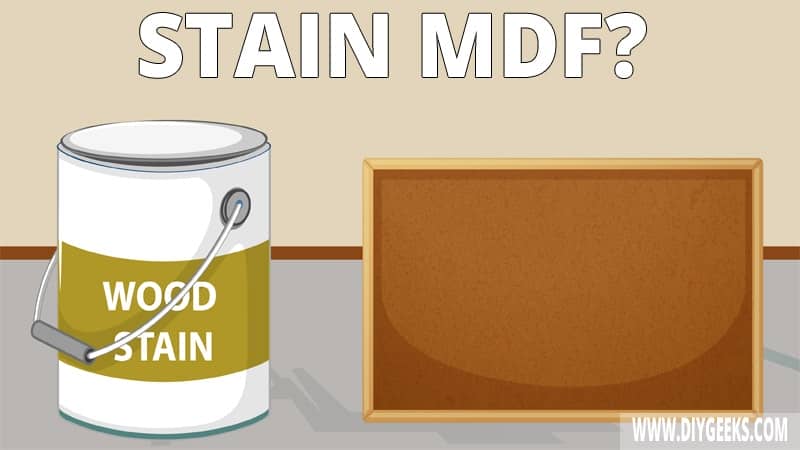MDF (Medium-density fiberboard) is an engineered wood made from wood fibers, wax, and resins, combined under high pressure and heat to create a smooth and dense sheet material.
You can stain MDF as it has a porous surface, but you must prep it by applying a washcoat or sanding sealer to prevent over-absorption.
To stain MDF, remove the existing finish, sand the MDF, apply a washcoat, and apply wood stain.
It’s recommended to use oil-based wood stain or gel stain as their thick coating won’t penetrate the surface too deeply. You can change the color of the MDF by using wood stain, paint, or wood dye.
Which Wood Stain Types Can You Use Over MDF?
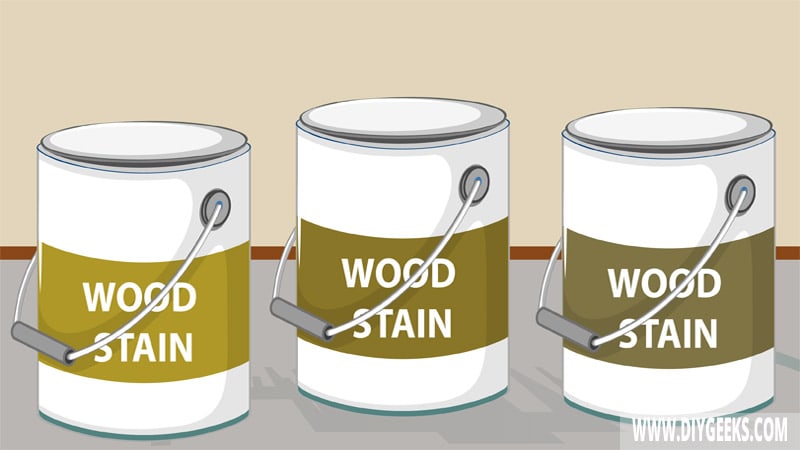
You can use oil-based wood stain or gel stain on MDF surfaces. Don’t use water-based wood stain as the MDF material is sensitive to water and can swell. Water-based stain uses water as its solvent, and if MDF absorbs too much of it, it will swell.
Oil-based or gel wood stain have good wood penetration so their thick coating won’t penetrate the surface too deep. This includes varnish, lacquer, gel stain, and other stains dissolved in oils (solvents).
Painting vs. Staining (For MDF)
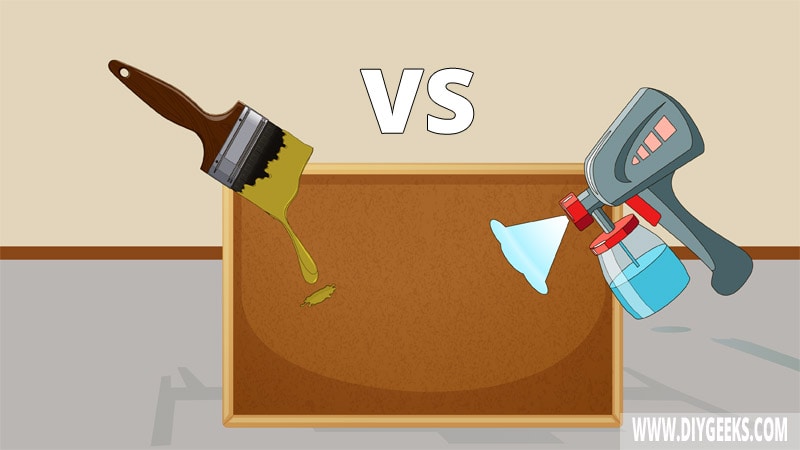
The difference between painting and staining MDF is that staining will enhance the wood color and show the grain because it penetrates the surface deeply. Painting covers the wood grain because it stays on the top layer and doesn’t penetrate it.
More differences between painting and staining MDF are listed below.
Painting
You can use different types of paints on MDF, but 0il-based is better for this material. Oil-based paints are thicker and provide a glossy layer over the surface, protecting it from moisture, water, and other damage.
Paint doesn’t penetrate a surface deep to stick (compared to wood stain); instead, it produces a layer over the top layer that covers (hides) the surfaces underneath. This means the wood grain will be covered by paint. You can choose different colors and mix two colors (of the same type of paint) to get a unique color.
You don’t need to seal paint for indoor MDF wood, as the paint’s glossy finish will protect it. However, you must seal the wood with a waterproof sealer if it’s placed outdoors.
Pros
- Protects the surface from scratches and dent marks.
- It’s available in different sheens.
- Protects the surface from moisture and spills (to a degree).
- Dries fast.
- For indoor surfaces, you don’t have to seal it.
- Hides imperfections.
Cons
- You must apply a primer before painting.
- You must thin it.
Staining
Staining will enhance the MDF wood color, but won’t protect it. That’s because the wood stain is made 60% from pigments and wood dye, meaning it doesn’t have protective additives and is formulated to only give color to a surface. That’s why it’s mostly used over decorative surfaces.
Wood stain penetrates the wood deep to stick, meaning it doesn’t stay over the top layer as paints do. However, since MDF surfaces have large pores and are porous, you must seal them to prevent over-absorption. You can seal it by using a washcoat or sanding sealer.
Pros
- It provides a colorful finish.
- It’s easy to apply and doesn’t require thinking.
- You can mix different types to create a unique finish.
- You don’t need to apply a primer.
- It highlights curves and shapes on the surface.
Cons
- It’s difficult to remove as it penetrates the surface deeply.
- You must seal it.
- It doesn’t offer wood protection since it’s not waterproof or resistant.
So, should you stain or paint MDF? Well, the answer to that ultimately depends on your taste and needs. If you want a protective finish, use paint, as they are stronger and able to withstand more use.
On the other hand, stains must be used on decorative MDF only. Remember to seal the wood stain so it becomes durable, especially for outdoor surfaces.
How To Stain MDF Cabinets, Doors, and Stairs?
To stain MDF cabinets, doors, and stairs, do the following things.
- Remove the Existing Finish.
- Sand the MDF.
- Apply a Washcoat.
- Apply the Wood Stain.
Staining MDF surfaces isn’t difficult, but you must prep (seal) them to prevent over-absorption and help the surface absorb stain evenly. You can do it by applying a coat of sanding sealer or shellac-based washcoat.
The tools for this project are listed below.
- Paintbrushes
- Lint-free cloths
- A gallon or more of oil-based wood stain (pick the right color)
- Oil-based polyurethane
- Mineral spirits
- A vacuum
- Shellac-based washcoat
- Drop sheets
- Sandpaper of different grits
- Paint stripper (if there is an existing finish on the MDF)
- A power sander (for large MDF surfaces)
1. Remove the Existing Finish
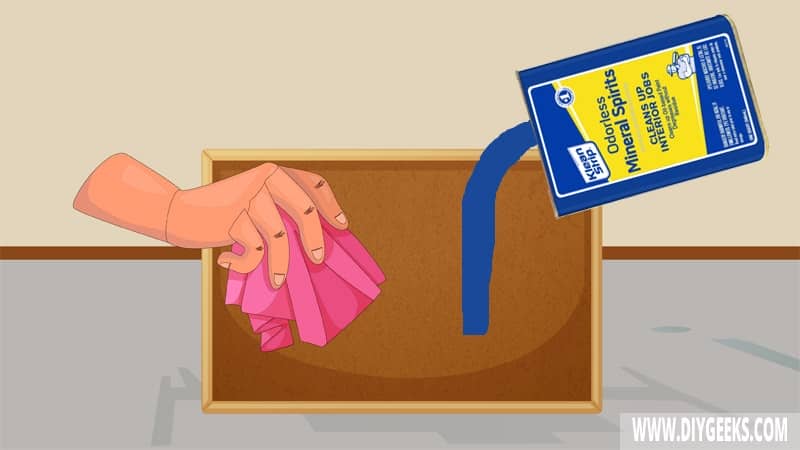
The wood stain won’t adhere and can peel off in a few weeks if the MDF surface is already painted or sealed. Remove the existing finish from the MDF surface before applying a new wood stain coat.
To remove the existing finish from MDF, do the following things.
- Apply paint stripper over the surface.
- Wait 15-30 minutes.
- Scrape the finish using a paint scraper.
- Clean the surface with water and leave it to dry.
2. Sand the MDF
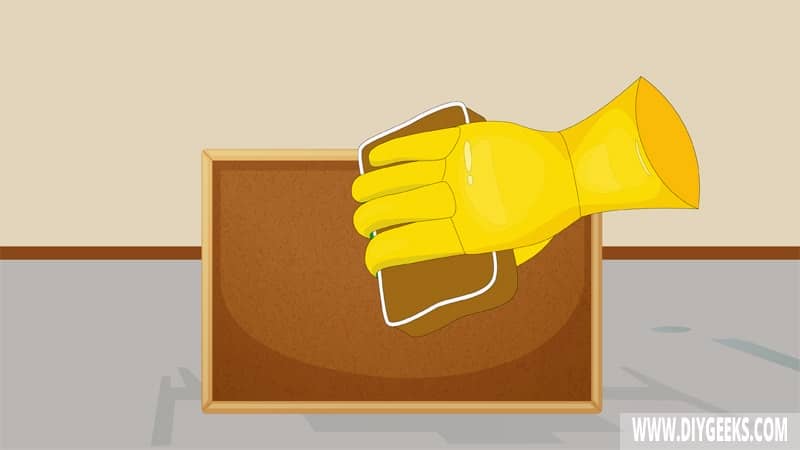
Sand the MDF surface with fine-grit sandpaper (220-grit) to remove surface imperfections, dust, and filth.
To prevent wood stain over-absorption, fill the MDF surface pores with sanding dust after using very fine-grit sandpaper (440-grit).
3. Apply a Washcoat
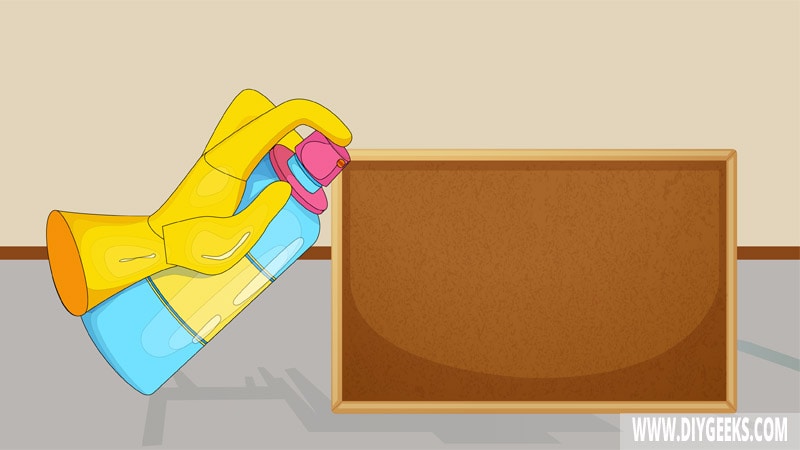
Apply one (1) washcoat coating over the MDF surface to prevent a patchy or splotchy finish and prevent the surface from wood stain over-absorption.
You can use sanding sealer or wood conditioner as an alternative to washcoat.
4. Apply the Wood Stain
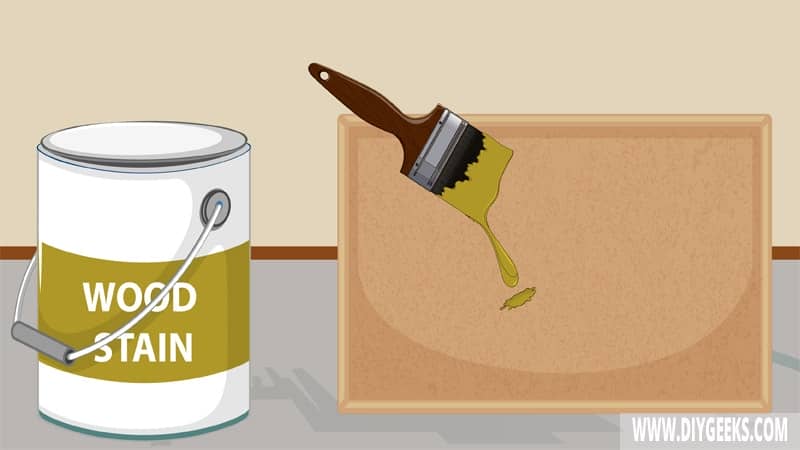
Apply 2-3 oil-based wood stain coats over the MDF surface using a lint-free rag or paintbrush. Wait until one coat dries, wipe the excess, and apply the next coating. Oil-based wood stain takes around 1 hour to dry between coats.
If the oil-based wood stain is too thick, thin it with mineral spirits in a ratio of 4:1 (4 parts stain to 1 part thinner).
Seal the stained MDF surface with a moisture-resistant sealer to protect it from water, moisture, scratches, and weather elements.
Can You Change the Color of the MDF furniture?
You can change the color of MDF furniture by using wood stain, paint, or wood dye (paint powder). Wood stain will give the surface more color, while the paint will give it more sheen.
Wood dye (or paint powder) can be mixed with mineral spirits, linseed oil, paint thinner, or other oil-based solvent. The mixture can be applied over a surface, and the color will set once the solvent dries.
